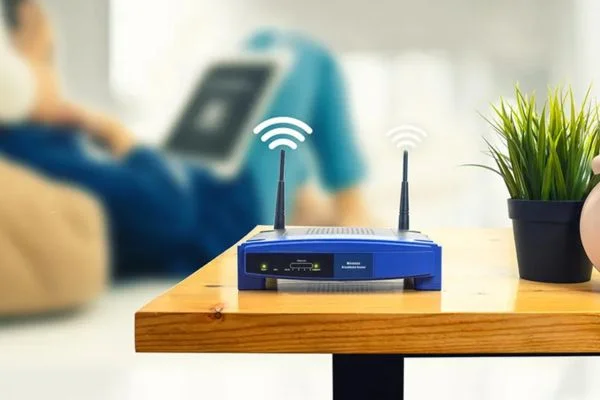The internet has become an indispensable part of our lives, and a reliable wifi connection is essential for all. With the ongoing pandemic, people have been moving out of houses, and in some cases, wifi routers need to be moved to different homes. But can you move your wifi router to a different house? If so, how do you do it? In this blog, we’ll review everything you need to know if you plan to move your wifi router to a different house.
In short, Yes, you can move your Wi-Fi router to a different house if you have access to power and a compatible internet connection.
Can You Move Your Wifi Router To A Different House?
So you’ve moved into a new house, and you’re itching to get your internet up and running. But wait, what about your trusty old wifi router? Can you take it with you to your new abode and get it connected?
The short answer is yes, you can move your wifi router to a different house.
However, remember a few things before you start packing up your tech. For starters, you’ll want to ensure your router is compatible with your new home’s new internet service provider.
Additionally, you may need to adjust your router’s settings and configuration to ensure optimal performance in the new space. But with some preparation, moving your router can be smooth and painless.
Also Read: How Does Fiber Optic Internet Work With Router?
How Do I Transfer My Wi-Fi From One Place To Another?

Moving from one place to another can be a hassle, especially when transferring your Wi-Fi. This task can be daunting for most people as they want to maintain their Wi-Fi connection and data. If you’re planning to move or thinking of changing your location, don’t worry anymore.
In this ultimate guide, we’ll provide you with all the essential steps you need to take to transfer your Wi-Fi from one place to another without any fuss.
1. Check Service Availability
Before moving to a new location, check if your internet service provider can cover your new area. You can use an online coverage map tool on your service provider’s website to confirm this information.
If your current ISP doesn’t cover your new location, determine which service providers offer services in that area.
2. Inform Your Current ISP
Once you confirm that you can’t keep your current internet service provider, call your ISP to inform them about your change of address.
You’ll be required to provide your new address and the relocation date. Your service provider will guide you on whether they’ll give you a new modem or if you need to get a new one.
3. Get a New Modem
If your service provider doesn’t offer services in your new area, you must look for a new ISP. Contact the new ISP and request a new modem; they usually provide new equipment when you sign up for their services.
If you’re relocating, you can buy a new modem and router. Ensure that the modem you select matches your new service provider’s requirements.
4. Notify Your Tenants or Landlord
Inform your landlord or tenants if you’re renting a new place and transferring your Wi-Fi. You might need permission or assistance to install a new internet connection. You must communicate with the building’s management to ensure clarity and clarity.
5. Set Up Your New Wi-Fi
After getting a new modem or router, you can now set up your new Wi-Fi. Follow the instructions for the installation process or contact a technician for assistance. Once it’s set up and running, test the Wi-Fi connection to confirm whether it’s working correctly.
Follow up with your service provider to ensure you’re receiving the complete speed of your subscribed package.
Also Read: Can I Use Any Router For Fiber Optic Internet?
How Do I Reconnect My Wifi After Moving?
Step 1. Identify the Ideal Location
Your wifi connection’s success depends on your router’s location. Before moving your router, find the best location in your new home.
The ideal place for a router is in the center of the home, away from thick walls, and placed high up. An open space with fewer obstructions and a clear line of sight to various rooms is a great place to put your router.
Step 2. Set Up Your Router
Once you have identified the ideal location, it’s time to set up your router. Start by unplugging the router and removing any cables connected to it.
Pack them securely for transportation. Set up your router at your new residence according to the instructions. Keep the device off the ground, on a table, or bookshelf to avoid interference.
Step 3. Reconfigure Your Router Settings
Moving your router might alter your device’s network settings, so you may need to reconfigure your router settings. You may need to reset your router to its default mode to guarantee a smooth transition. You can also contact your internet provider to guide you through reconfiguring your router if you need assistance.
Step 4. Test Your Connection
After setting up and reconfiguring your router, test your internet connection to determine whether it is stable and fast. Do this by running an internet speed test to check your upload and download speeds. Make sure all devices are connected to the network and working correctly.
Step 5. Troubleshoot Connectivity Issues
Despite having everything in place, you may face connectivity issues after moving your router. Troubleshoot by checking cables and wires for damages or replacing them if necessary. You can also contact technical support or your internet service provider to help resolve the problem.
Also Read: Do You Need A Router For Fiber Optic Internet?
Bottom Line:
So, Can You Move Your Wifi Router To A Different House? Moving your wifi router to a different house is manageable if done correctly. Begin by identifying the ideal location, setting up your router, reconfiguring your router settings, testing your connectivity, and troubleshooting connectivity issues if necessary.
Once you’ve followed these steps, you’ll have a smooth transition and settled into your new internet abode seamlessly. Now you can enjoy streaming, browsing, and working from anywhere in your new residence.



